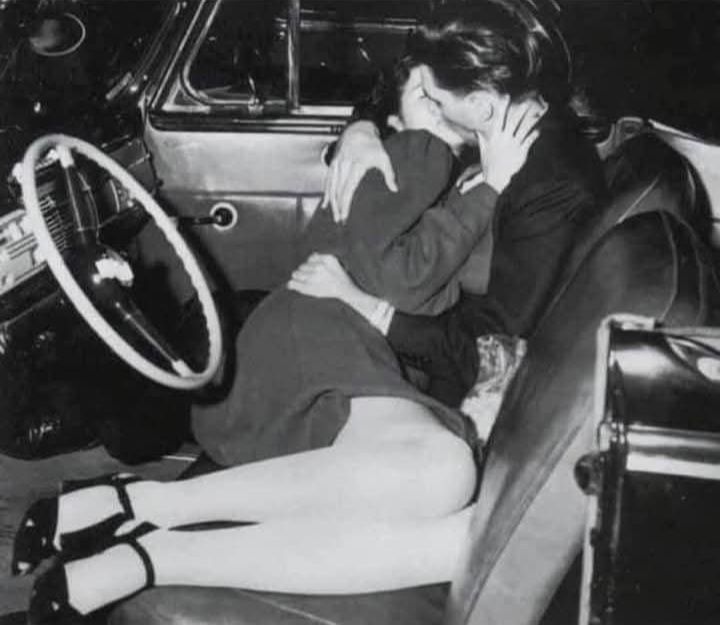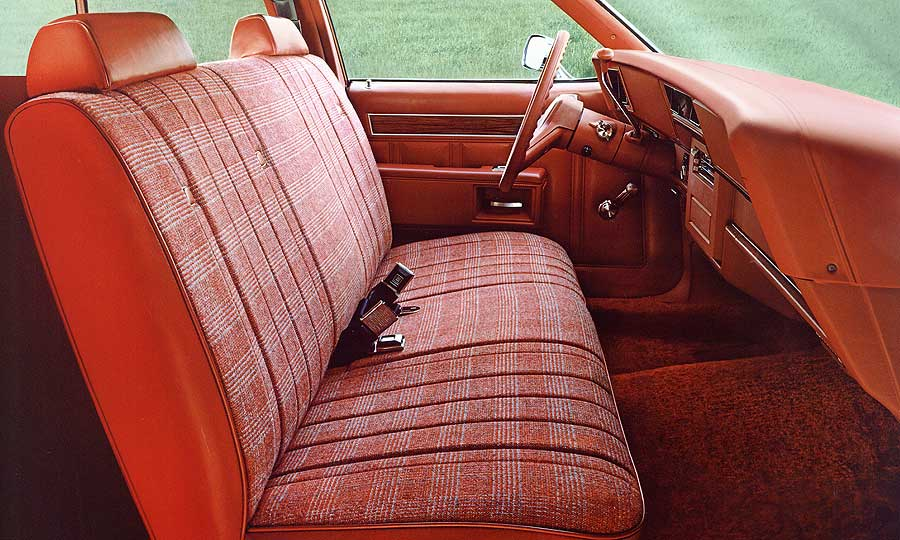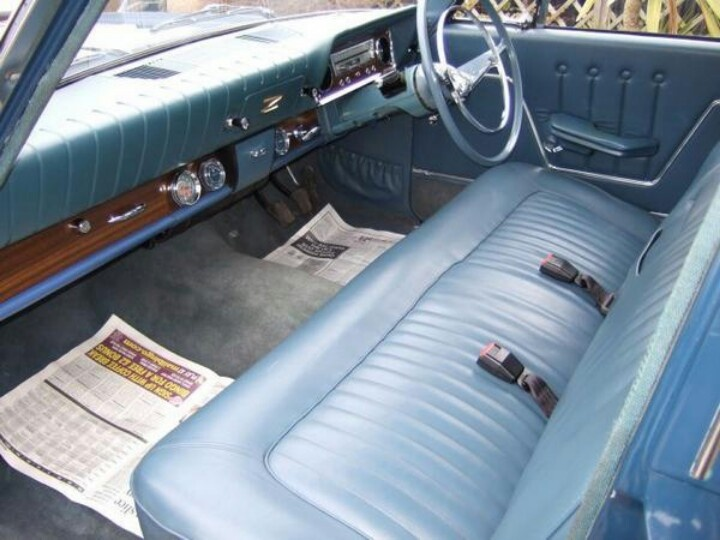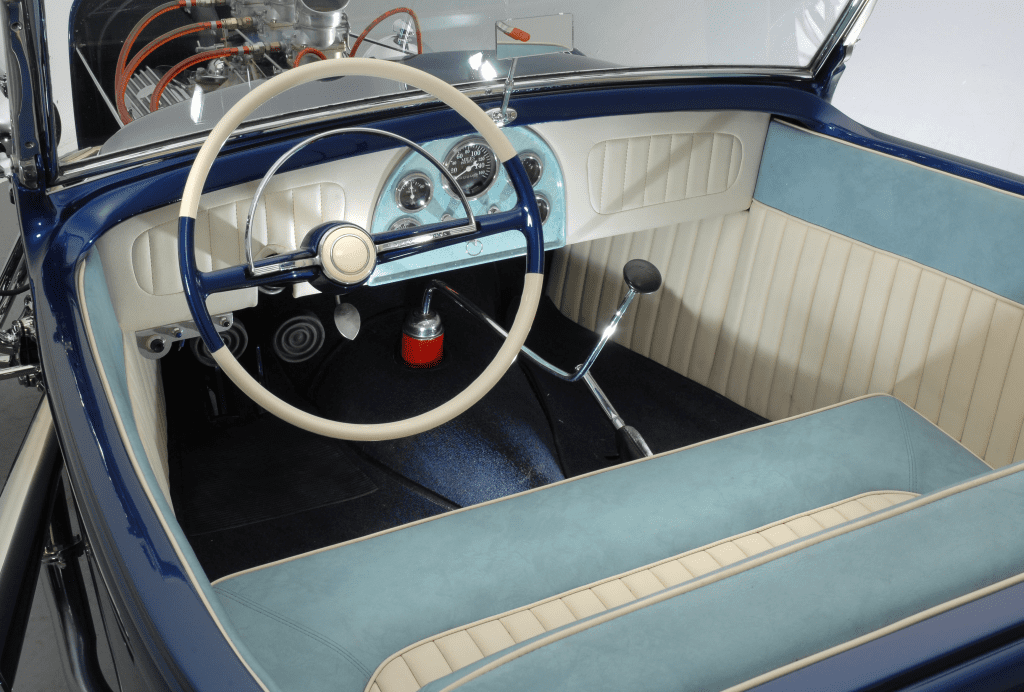The image of a couple sharing a romantic moment on a front bench seat captures an era that no longer exists in modern automobiles. Once a staple in American car culture, bench seats offered a unique blend of comfort, practicality, and nostalgia. For decades, these seats symbolized togetherness, allowing passengers to sit side by side without the barrier of a center console.
But as times changed, so did car designs. Today, front bench seats have vanished, replaced by bucket seats and center consoles. So, why did this happen? Let’s take a deep dive into the history, features, benefits, and reasons for the disappearance of bench seats in cars.

The History of Cars with Bench Seats
In the early days of automobiles, car interiors were heavily inspired by horse-drawn carriages, which featured long, continuous seats. Bench seats became the norm and remained a dominant design for much of the 20th century.
- 1910s–1920s: The Ford Model T (introduced in 1908) and luxury brands like Cadillac and Packard featured bench seats as standard.
- 1930s–1950s: American automakers such as Chevrolet, Ford, and Chrysler continued using bench seats in their sedans, offering spacious and practical seating.
- 1960s–1970s: This was the golden era of bench seats, with popular models like the Chevrolet Impala, Ford Galaxie, Cadillac DeVille, and Buick Electra all featuring them. These seats weren’t just practical—they became a cultural phenomenon. Couples could sit close together while cruising down the highway, making them a favorite for romantic drives.
- 1980s–1990s: As safety regulations and design preferences evolved, bucket seats began replacing bench seats in passenger vehicles. By the early 2000s, they were almost extinct.

Defining Features of Bench Seats
What made bench seats so special? Their design and functionality set them apart from today’s bucket seats:
- Spacious Layout: Bench seats stretched across the entire front of the car, comfortably seating three passengers.
- Lack of a Fixed Center Armrest: Without a center console, passengers could slide from one side to the other.
- Column-Mounted Gear Shifter: To keep the front area open, many cars placed the gear shifter on the steering column rather than on the floor.
- Classic Aesthetic: Whether wrapped in leather or fabric upholstery, bench seats exuded a timeless charm.
The Benefits of Bench Seats
While they may seem outdated now, bench seats provided several advantages that made them beloved by generations of drivers:
1. Maximizing Passenger Capacity
In the days before seat belt regulations, bench seats allowed families to fit six passengers in a sedan—three in the front and three in the back. This was especially useful for large families or long road trips.
2. The “Date Night” Experience
Before bucket seats and mandatory seat belts, bench seats allowed couples to sit closely together while driving. Many classic love stories started with a romantic drive in a car with a bench seat.
3. Practical for Work Vehicles
Police cars, taxis, and pickup trucks used bench seats to accommodate more passengers efficiently. The design made it easier to slide across the seat when exiting the vehicle.
4. Comfort for Long Journeys
Bench seats provided ample legroom and an open layout, making them ideal for long road trips where passengers could shift positions freely.

Why Did Bench Seats Disappear?
Despite their practicality and nostalgic appeal, bench seats started disappearing from mainstream cars in the 1980s. Several factors contributed to their decline:
1. Stricter Safety Regulations
- In 1968, three-point seat belts became mandatory in front seats, making the middle seat less practical for passengers.
- Airbag regulations in the 1990s required larger dashboards, leaving less space for a full bench seat.
- Safety-conscious consumers preferred bucket seats for their additional support and protection in crashes.
2. Changing Consumer Preferences
- Drivers prioritized individual seating rather than a shared bench.
- The growing demand for luxury features like heated seats, lumbar support, and adjustable armrests made bucket seats more attractive.
- Sportier designs became more popular, and bench seats didn’t fit the high-performance aesthetic.
3. The Rise of Center Consoles
- Cupholders, storage compartments, and touchscreen controls required a center console, making bench seats impractical.
- Automakers introduced infotainment systems that needed dedicated controls in the center, further reducing the feasibility of bench seats.
The Last Cars to Feature Bench Seats
The 2013 Chevrolet Impala was the last American sedan to offer a front bench seat, officially marking the end of an era. While some pickup trucks still include bench-style seating, no modern passenger cars continue this tradition.

Are Bench Seats Completely Gone?
Not entirely. While they have disappeared from most cars, you can still find bench seats in certain vehicles:
- Pickup Trucks: Some full-size trucks still offer a front bench seat option, especially for work vehicles.
- Classic Cars & Restorations: Many vintage car enthusiasts restore and maintain their bench seat models, keeping the tradition alive.
- Custom Modifications: Some car enthusiasts swap bucket seats for custom bench-style seating in retro builds.
Final Thoughts: A Nostalgic Symbol of the Past
Bench seats were more than just a design choice—they represented a different era in automotive history. They were a place for families to sit together, for couples to share intimate moments, and for travelers to enjoy spacious comfort.
While modern cars prioritize safety and technology, there’s something undeniably charming about the simplicity of a bench seat. For those who remember cruising in a classic Chevrolet Impala, Ford Galaxie, or Cadillac DeVille, the memory of sitting close to a loved one on a front bench seat is something that will never fade.
Though they may no longer be found in today’s sedans, bench seats remain an iconic part of the golden age of American automobiles—and for those lucky enough to have experienced them, they will always hold a special place in automotive history.